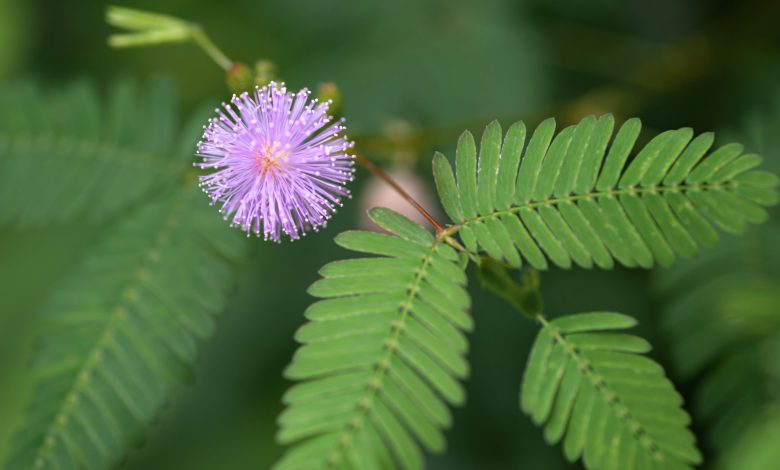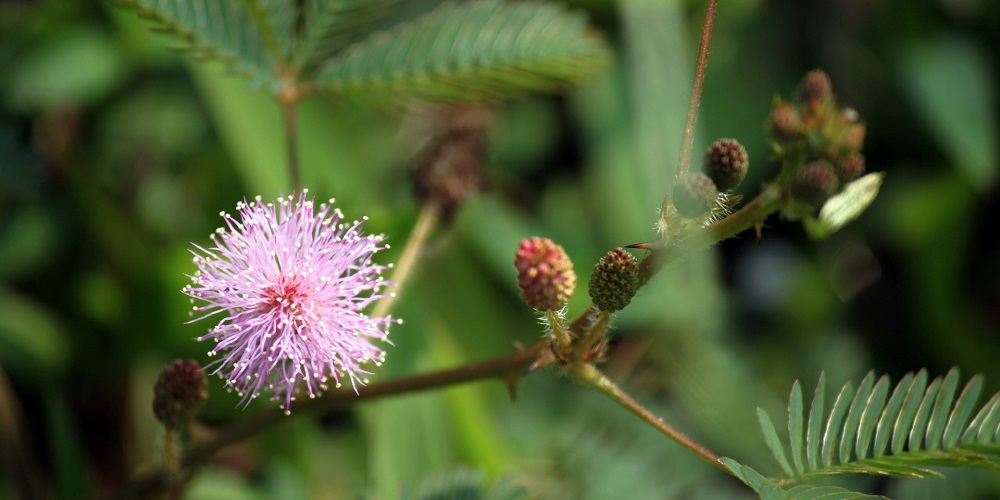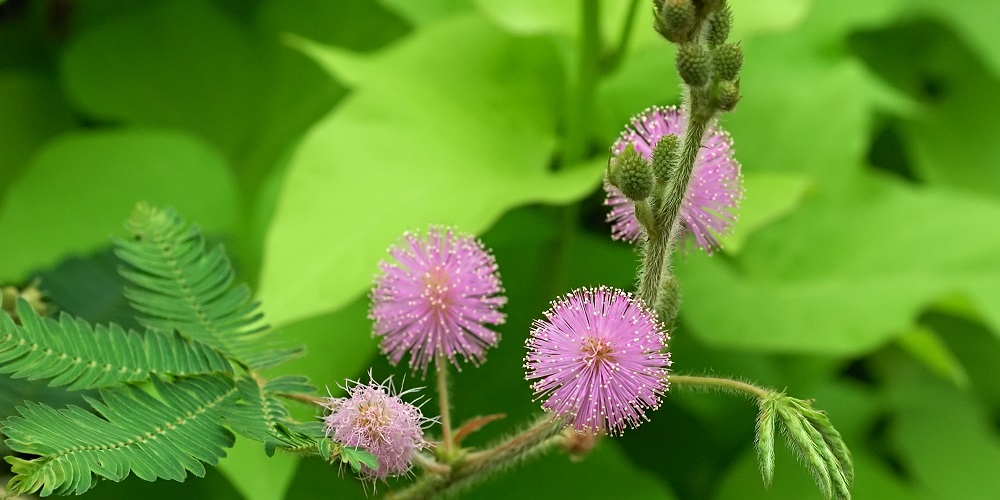Mimosa pudica care

It is known by many names: sleepyhead, shameful, sensitive, plant of shame, opium poppy or moriviví. This species is the protagonist of scientific studies related to plant intelligence. This is due to its amazing ability to move, a reaction that allows it to bend its leaves and stems with the slightest external contact.
Today many consider plants only as a decoration or a stage where the lives of other living beings take place. However, some contemporary scientists have concluded that some plant species are much more than that and, as proof of this, we have the shameful plant.
This species has received special attention from the scientific community , which is why it has been the protagonist of numerous studies on plant intelligence.
Origin and uses
It originates from the tropical regions of America and is present in areas ranging from Mexico to Brazil. Although it has also been introduced in Asia, Tanzania, Australia, much of the Pacific islands and Africa; especially in regions with tropical climate.
As for its use, some peoples of Mexico and South America use its leaves to prepare relaxing baths that help deal with insomnia. On the other hand, recent research has shown that this plant is effective in extracting arsenic and heavy metals from some soils that have been contaminated. These elements accumulate in its leaves, which is why it could be very useful for cleaning toxic soils.
plant characteristics
Given its high germination rate and rapid growth, it is considered an invasive plant or weed; since it could prevent the development of other plant species. It is herbaceous in nature and can be reclined on the ground or erect, reaching approximately 50 to 100 cm in height. Its stem is striated in shape and is sometimes covered with spines or erect hairs.
This species is also used as an ornament, thanks to the beauty of its delicate flowers. The mimosa flower occurs in small grouped clusters with a diameter of 1.5 cm, they are violet or pink in color and their stamens are equal in number to the lobes present in their corolla.
Its leaves are alternate, bipinnate and compound, which is why they resemble the leaves of ferns and look like small branches. They have a short main axis called the rachis and one or two pairs of secondary axes from which there are between 15 to 25 pairs of small blades 10 mm long; pointed, with an asymmetrical base and hairs on their margins.

a sentient species
If there is something that defines it and that stands out in the mimosa shameful, it is the movement that its leaves make when touched; this reaction is known as nictinastia. It is a mechanism typical of the species that makes the plant move , but it not only closes its twigs and leaves to human or animal contact; it also closes at dusk, when it rains, when something makes it vibrate like the wind or when something bumps into it.
This movement could be a means of defense to protect themselves from the animals that consume it. However, the movement of opening and closing its leaves has a high cost and a considerable expenditure of energy; so it can lose up to 40% of its ability to capture the sun’s energy and to reopen it can take between 15 and 20 minutes. For this reason, it is recommended not to play it just for fun.
The care that the sleepyhead requires
This plant can be reproduced either from seed or cuttings and can thrive outdoors or indoors. When you decide to have it at home, it is important to know the care of the mimosa pudica in order to provide it with an environment where it can grow and develop.
Lighting and placement
To provide the best lighting, the plant must be placed in the right place. If you are indoors, it should be placed in a lighted room, protected from tobacco smoke and away from drafts.
In the event that the mimosa plant is outdoors, it is best to place it in full sun or in semi-shade areas. In this environment it will grow as a climber, so it is necessary to help it using supports.
Humidity
As for irrigation, this can be from moderate to frequent, according to the season of the year and depending on where the plant is located. In the warm months it should be watered three times a week; and the rest of the year, two weekly waterings could be enough. In this sense, it should be taken into account that excess moisture could damage its roots. In addition, if it is planted in a pot, it will need more watering than if it is grown in a direct soil garden.

Temperature
Since it is a tropical species, it does not tolerate frost ; so it is not convenient to expose it to temperatures below 11ºC. It prefers the heat of the sun, approximately 6 hours a day.
Crop
Growing a mimosa in a pot is possible, you just have to choose a container with holes in its base so that the water can drain easily. Likewise, the chosen pot must be large, since it is a plant whose roots grow quickly and abundantly. It is also advisable to fill the pot with mulch or use a mixture of substrate with coconut fiber. If grown in the garden, this plant does not require much care; only well-drained soil rich in organic matter is needed.
Subscriber
Although it is a resistant species that does not require special fertilization; To ensure that sensitive mimosa grows healthy in domestic environments, it is advisable to add organic compost or a mineral fertilizer from spring to summer; especially during flowering. Thanks to these cares, the plant could survive the low winter temperatures.
Pruning
As for pruning the mimosa, the expert recommendation is not to do it. In addition, it is a species that is not usually a carrier of pests or a victim of insect attack.
When we find a sleeper in nature, it is best to observe it carefully, extend our hand and watch how it moves. This little plant is capable of keeping one of the greatest natural mysteries in science.



![Photo of White Mold in your Garden: [Identify, Prevent and Treat]](https://www.complete-gardening.com/wp-content/uploads/2022/08/white-mold-in-your-garden-identify-prevent-and-treat-390x220.jpg)
![Photo of Prune Bougainvillea: [Importance, Time, Considerations and Steps]](https://www.complete-gardening.com/wp-content/uploads/2022/08/prune-bougainvillea-importance-time-considerations-and-steps-390x220.png)